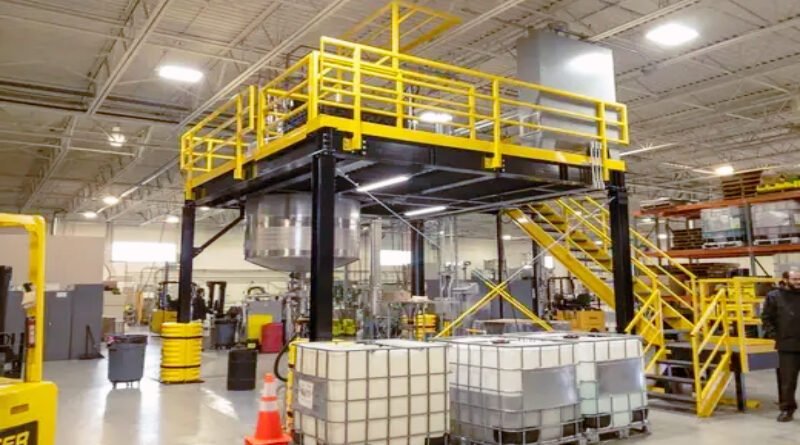Small Batch Blending Services vs. Large-Scale Blending: Choosing the Right Approach
Blending is a critical process in numerous industries, from food and beverage to pharmaceuticals and specialty chemicals. The choice between small batch blending services and large-scale blending depends on factors such as production volume, quality control, flexibility, and cost. Understanding the differences between these two approaches allows businesses to optimize their manufacturing processes and deliver products that meet their specific needs.
What Is Small Batch Blending?
Small batch blending refers to the production of limited quantities of a product, typically for niche markets, research and development, or customized formulations. This method is widely used in industries that require high precision, flexibility, and tailored ingredient ratios.
Key Features of Small Batch Blending:
- Customization: Allows for highly specific formulations and modifications.
- Precision: Enables strict control over ingredient ratios and consistency.
- Flexibility: Easily accommodates changes in formulations and ingredients.
- Lower initial investment: Requires less capital investment compared to large-scale production.
Small batch blending services are especially valuable for businesses that are developing new products, responding to seasonal trends, or serving specialized markets.
What Is Large-Scale Blending?
Large-scale blending, or bulk blending, is designed for high-volume production where efficiency, uniformity, and cost savings are priorities. This method is often used by major manufacturers who distribute products on a national or global scale.
Key Features of Large-Scale Blending:
- Efficiency: Produces large quantities of blended materials quickly and cost-effectively.
- Consistency: Ensures uniformity across vast production runs.
- Cost Savings: Benefits from economies of scale, reducing the cost per unit.
- Automated Processes: Relies on advanced machinery and minimal manual labor to enhance productivity.
While large-scale blending is ideal for established products with consistent formulations, it is less adaptable to frequent formulation changes or smaller production runs.
Comparing Small Batch and Large-Scale Blending
To determine the best approach for your business, it’s important to analyze how each blending method aligns with your operational goals and market demands.
- Production Volume
- Small Batch Blending: Ideal for low to medium production volumes. This method is perfect for companies producing specialty products or those testing new formulations before scaling up.
- Large-Scale Blending: Suited for mass production. If you need thousands or millions of units with the same formulation, this approach is more efficient.
- Product Development and Innovation
- Small Batch Blending: Provides an excellent platform for research and development (R&D). Companies can experiment with new formulations, test market demand, and refine their products before committing to full-scale production.
- Large-Scale Blending: Best for well-established products with consistent formulations. Since changes in the production process can be costly, innovation is typically slower in large-scale operations.
- Cost Considerations
- Small Batch Blending: The per-unit cost may be higher due to manual processes, smaller ingredient purchases, and specialized formulations. However, it offers a lower initial investment and reduced risk.
- Large-Scale Blending: Achieves lower per-unit costs through bulk purchasing, automation, and streamlined production. However, the setup and operational costs are significantly higher.
- Quality Control and Consistency
- Small Batch Blending: Offers meticulous quality control and batch-to-batch consistency due to close monitoring and manual oversight.
- Large-Scale Blending: Relies on automation and strict process controls to maintain product uniformity. Any deviation in quality can result in large-scale recalls.
- Scalability and Market Responsiveness
- Small Batch Blending: Highly adaptable and responsive to market changes. If consumer preferences shift or new regulations arise, companies can quickly adjust formulations.
- Large-Scale Blending: Less flexible, as large production runs require long-term commitments to specific formulations and ingredient suppliers.
Industry Applications for Each Blending Method
Many industries utilize both small batch and large-scale blending, depending on their specific needs.
Pharmaceuticals
- Small Batch Blending: Used for clinical trials, specialized medications, and personalized medicine.
- Large-Scale Blending: Common for mass production of over-the-counter drugs and high-demand prescription medications.
Food and Beverage
- Small Batch Blending: Perfect for artisan food brands, seasonal flavors, and specialty health products.
- Large-Scale Blending: Used for popular consumer goods that require consistent taste and texture across thousands of units.
Chemical Manufacturing
- Small Batch Blending: Beneficial for specialty chemicals and R&D formulations.
- Large-Scale Blending: Essential for industrial-grade chemicals used in manufacturing, agriculture, and energy sectors.
Cosmetics and Personal Care
- Small Batch Blending: Ideal for custom beauty formulations and organic products.
- Large-Scale Blending: Used for mainstream products sold in mass retail chains.
Making the Right Choice
When deciding between small batch blending services and large-scale blending, consider the following factors:
- Market Demand: Do you need a niche product or a mass-market solution?
- Product Lifecycle: Are you in the development phase, or is your product already well-established?
- Regulatory Requirements: Does your industry require stringent quality control measures?
- Budget and Infrastructure: What is your available capital for production and equipment?
- Scalability: Will you need to scale production in the future, and how quickly?
Conclusion
Choosing between small batch blending services and large-scale blending is a critical decision that affects production efficiency, cost structure, and product quality. Small batch blending offers flexibility, customization, and precise quality control, making it the preferred choice for startups, specialty brands, and R&D projects. In contrast, large-scale blending provides economies of scale and high efficiency, making it ideal for companies with high-volume production needs.
By assessing your business goals, market demands, and operational capabilities, you can select the blending approach that best aligns with your long-term success.
Also visit Digital Global Times for more quality informative content.

